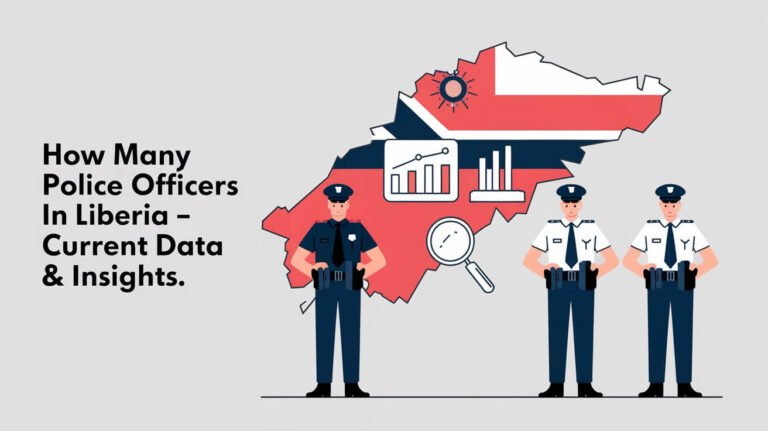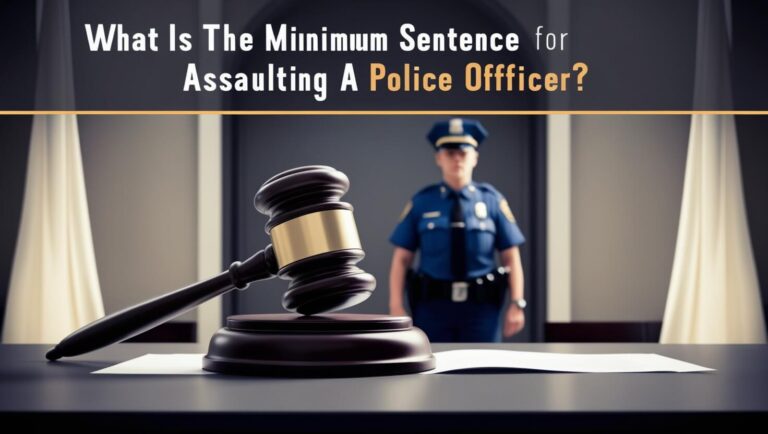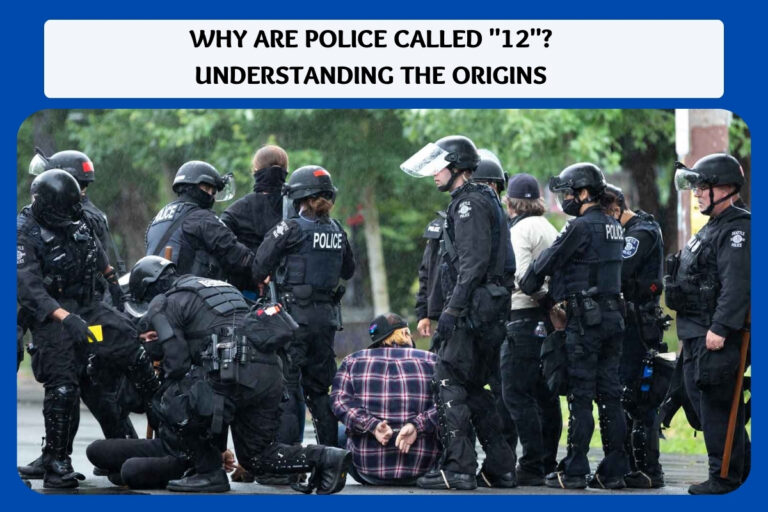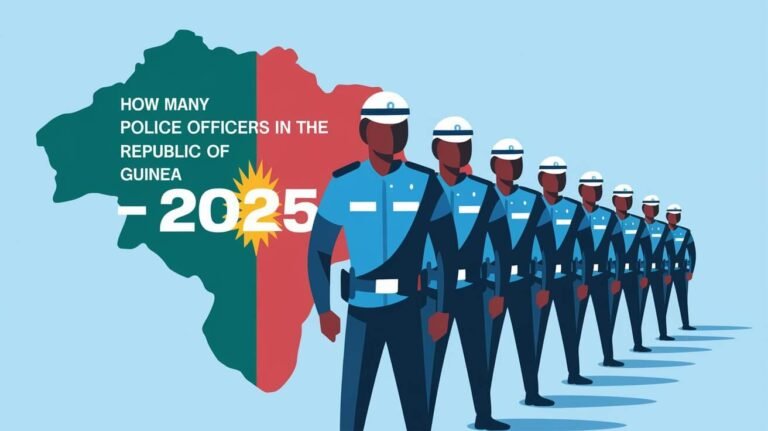How Many Police Officers Suriname: Facts and Statistics
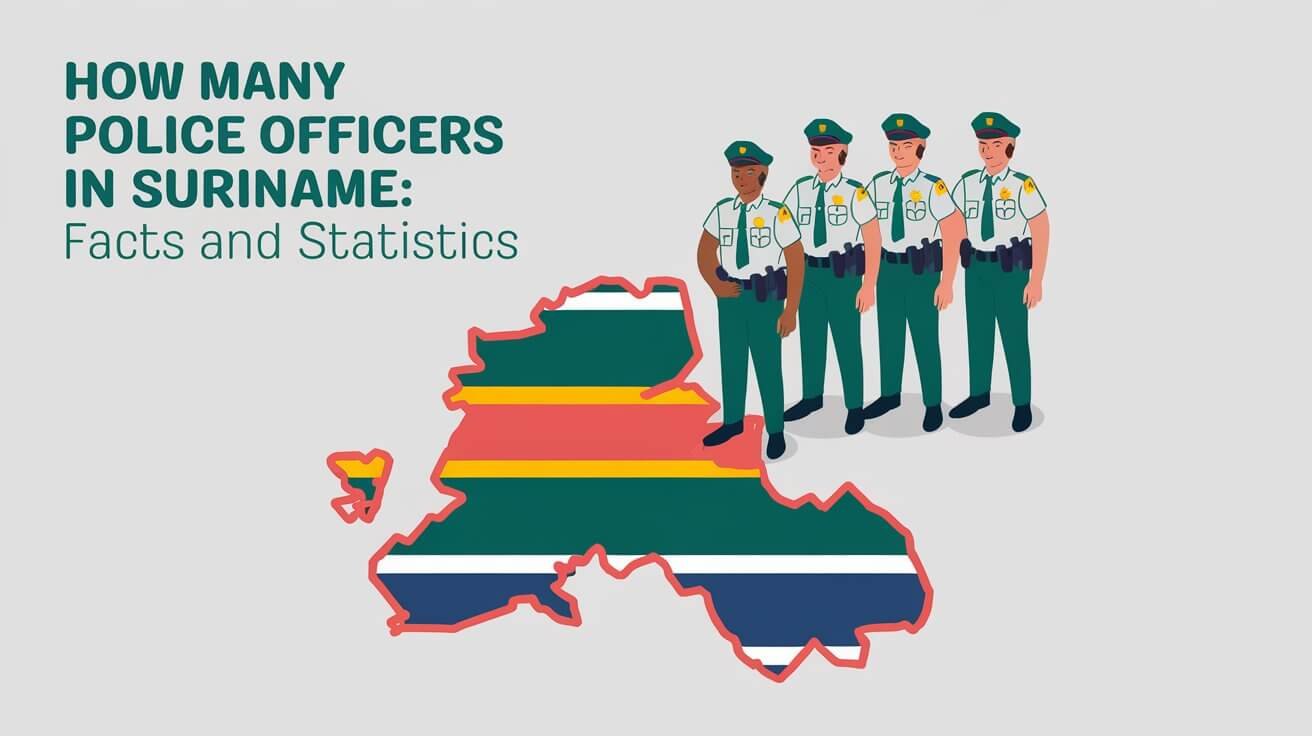
Knowing how many police officers Suriname has is key to understanding public safety. With a population of about 493,000, the police force is essential. They work hard to keep the country safe and orderly.
The Korps Politie Suriname (KPS) is a major part of this effort. They focus on keeping everyone safe and secure. The police are vital in stopping crimes and keeping the peace.
The way the police are organized is important for their work. The government has made efforts to make them better. This includes training and fighting corruption.
As Suriname’s needs change, so does its police force. It’s important to look at how they’re doing. This helps us see how safe and secure the country is.
Current Police Force Statistics in Suriname
The police in Suriname are key to keeping everyone safe. There are about 2,500 active officers. They are spread out across different areas, with many in Paramaribo.
The number of officers per person is important. With a population of 590,000, the ratio is quite low. This makes it harder for the police to do their job well. But, there are plans to hire more officers to boost safety.
Total Active Officers
Suriname’s police are divided into city, rural, and judicial officers. The city police look after Paramaribo. The rural police cover the rest of the country.
Officer-to-Population Ratio
The ratio of officers to people in Suriname is about 1:235. This is lower than what’s recommended. It makes it tough to keep everyone safe, mainly in rural areas.
Distribution Across Districts
Here’s how police officers are spread out in Suriname:
| District | Number of Police Officers |
|---|---|
| Paramaribo | 1,200 |
| Wanica | 400 |
| Coronie | 200 |
| Nickerie | 300 |
| Saramacca | 250 |
| Other districts | 350 |
This shows we need more police in some areas. It’s important for everyone’s safety.
Police Force Structure and Organization
The law enforcement structure in Suriname is complex and vital for public safety. Knowing how the police are organized helps us see if they work well. The police are split into different parts, each with its own job.
The police setup is designed to tackle Suriname’s unique security issues. It has to deal with a diverse population and different environments. The police aim to keep law and order, solve crimes, and help the community. They have units like patrol, investigation, and special teams for terrorism and drugs.
Some important parts of the police structure in Suriname are:
- Centralized command structure: The police have a central command that oversees everything and makes big decisions.
- Decentralized operations: The police are split into districts, each with its own team and tasks.
- Specialized units: There are special teams for things like fighting terrorism, drugs, and sea policing.
- Community policing: The police focus on working with local communities to prevent crimes and build trust.
The police structure in Suriname is key to keeping people safe. By understanding the police setup, we can find ways to make them better at their job.
Historical Development of Suriname Law Enforcement
The history of law enforcement in Suriname is complex and interesting. It has shaped the country’s policing landscape. Knowing this history helps us understand today’s policing challenges.
Many factors have influenced Suriname’s police development. These include colonial rule, social changes, and new policing strategies.
Important events in Suriname’s law enforcement history include the Marechaussee’s establishment in 1863. This marked a big change in colonial society. The Marechaussee helped keep order during a time of big social changes after slavery was abolished.
From 1863 to 1895, Suriname had two police forces. The Marechaussee and the Inland Police Force merged in 1895. This created one Armed Police Force.
Colonial Period Police Force
After 1865, the colonial authorities introduced special constables. This was a change in how law enforcement worked. The police had to handle more challenges as indentured workers came and new gold mines opened. They needed to deal with smuggling along the borders.
Post-Independence Changes
After gaining independence, Suriname’s law enforcement changed a lot. The police force kept evolving, focusing on keeping order. The history of law enforcement in Suriname is rich and complex, with many factors influencing its development.
Modern Era Developments
In recent years, Suriname’s police have focused on modernizing. They’ve introduced reforms like training and community outreach. These efforts aim to improve their relationship with the public and their crime-fighting abilities. Understanding Suriname’s law enforcement history is key to grasping today’s policing challenges.
Police Training Programs and Requirements
Effective police training is key for law enforcement officers to tackle Suriname’s complex security issues. The country has made a big push for police training, teaming up with international partners. For example, the Hubert H. Humphrey Fellowship program has helped officials like Marcha Reumel, an assistant commissioner, attend classes at Penn State.
Reumel’s time at Penn State’s Justice and Safety Institute (JASI) shows the value of such training. She took courses in leadership and command, which helped her revamp the police academy in Suriname. JASI works with countries like Nigeria and Morocco, showing the global need for law enforcement education.
Some key aspects of police training in Suriname include:
- Access to hundreds of online courses for police training requirements
- 24/7 access to confidential behavioral health tools and assessments for officer wellness
- Grant assistance available for essential equipment, personnel, and consulting services
- Automated field training program for accelerated skills acquisition
These efforts show Suriname’s dedication to quality police training. By focusing on law enforcement education, Suriname is working to improve security and ensure a safer future for its people.
Special Units and Task Forces
Suriname’s law enforcement has special units to tackle security issues. These units are key in keeping the country safe and fighting global crime. They work together, sharing information and strategies.
The special units include the counter-terrorism unit, narcotics division, and maritime police. They have special training and gear for dangerous tasks. For instance, the counter-terrorism unit gets training from the U.S. to improve their skills.
Key Special Units
- Counter-Terrorism Unit: handles terrorist threats and incidents
- Narcotics Division: combats drug trafficking and organized crime
- Maritime Police Force: patrols Suriname’s coastal waters and prevents maritime crime
The special units in Suriname team up with task forces to meet their goals. Task forces tackle issues like human trafficking, cybercrime, and money laundering. This collaboration helps fight crime and keep the country safe.
| Unit | Responsibility | International Partners |
|---|---|---|
| Counter-Terrorism Unit | Counter-terrorism operations | United States, Caribbean Basin Security Initiative (CBSI) |
| Narcotics Division | Drug trafficking and organized crime | United States, CBSI |
| Maritime Police Force | Maritime crime and coastal patrols | United States, CBSI |
Regional Police Distribution and Coverage
The police in Suriname are key to keeping the country safe. There are 21 detention centers, and where police are stationed is very important. The armed forces handle national security and borders, while the police keep the peace under the Ministry of Justice and Police.
Police in Suriname work with the military to fight crime. They also join special teams for security. This teamwork helps keep the country safe and tackles big issues like freedom of speech and child labor. The police spread out across the country to keep everyone safe.
Some important things about the police in Suriname are:
- Regular joint patrols with military personnel to combat crime
- Special security teams to address specific security concerns
- Adequate coverage across different districts to maintain public safety and security
Suriname faces big challenges like human and arms trafficking. Its location makes it a hotspot for illegal activities. Knowing how police are spread out helps find ways to make the country safer.
| Region | Number of Police Officers | Detention Centers |
|---|---|---|
| Paramaribo | 500 | 5 |
| Coronie | 200 | 2 |
| Marowijne | 300 | 3 |
Police Equipment and Resources
Effective policing in Suriname depends on good police equipment and resources. The country is a key spot for illegal activities like human and arms trafficking. This makes it vital for law enforcement to be well-equipped and resourced.
The police in Suriname use many tools and technologies. This includes basic communication devices and advanced surveillance systems. Despite this, Suriname ranks 115th in criminality score. It also ranks 170th in resilience score. This shows the need for better police equipment and resources to fight crime and keep the public safe.
Vehicle Fleet
The police vehicle fleet in Suriname is key for law enforcement’s mobility and quick response. A modern and well-kept fleet helps police officers to quickly reach emergencies and patrol effectively.
Technology Systems
Technology systems are vital for effective policing in Suriname. These include communication and surveillance systems. They help law enforcement to share intelligence, coordinate, and track crimes.
| Category | Description |
|---|---|
| Police Equipment | Includes vehicles, communication devices, and surveillance systems |
| Law Enforcement Resources | Encompasses training programs, technology systems, and international cooperation |
| Vehicle Fleet | Comprises police cars, motorcycles, and other vehicles for mobility and responsiveness |
| Technology Systems | Includes communication infrastructure, surveillance systems, and data analytics tools |
Police equipment and resources in Suriname are key for public safety and crime control. Investing in these areas is essential for effective law enforcement and citizen safety.
International Cooperation and Partnerships
Suriname plays a key role in fighting global crime by working with other countries. It has formed strong partnerships, including with the United States. These efforts help improve Suriname’s security and tackle worldwide threats.
The Guiana Shield Strategic Dialogue is a big step in this fight. It brings together countries to fight drug trafficking and crime. Suriname also works closely with the U.S. Southern Command (SOUTHCOM) to boost its crime-fighting skills.
Some key parts of Suriname’s work with others include: * Joining forces in global crime-fighting efforts, like the Conference of American Armies (CAA) * Team up with the U.S. to strengthen security and tackle big challenges * Regular training with U.S. Southern Command (SOUTHCOM) to get better at fighting crime * Sharing crime info with the U.S. to help each other out
These partnerships are essential for Suriname’s safety and security. By teaming up with other nations and groups, Suriname can better face today’s security issues. This makes the country safer for everyone living there.
| International Partnership | Purpose |
|---|---|
| Guiana Shield Strategic Dialogue | To synchronize maritime operations among neighboring countries to counter narcotrafficking and transnational criminal organizations |
| U.S. Southern Command (SOUTHCOM) | To build capacity and capabilities in combating transnational crime |
| Conference of American Armies (CAA) | To participate in international law enforcement efforts and share best practices |
Police Response Times and Emergency Services
Fast police response times are key to keeping people safe and building trust in law enforcement. In Suriname, the police struggle to reach emergencies quickly, mainly in rural areas. Their quick and effective response is vital for public safety and trust.
Research shows that quicker police responses lead to faster crime solving, like thefts. For example, a study by Jordi Blanes i Vidal and Tom Kirchmaier found that arrests within 15 minutes of arrival have an 85% crime solving rate. Without immediate arrests, the rate drops to 34%.
Urban Area Response
In cities, Suriname’s police respond faster because there are more stations and services. Yet, the police face challenges due to being understaffed and underfunded. These issues hinder their ability to handle emergencies well. Some urban challenges include:
- High rates of petty crimes like pickpocketing and purse snatching
- Insufficient resources and staff, causing slow responses
- Higher risks of violent crimes, like armed robbery and assault
Rural Area Coverage
In rural areas, police take longer to arrive because of fewer stations and services. Rural challenges include:
- Little police presence, making quick responses hard
- Hard access to medical help and emergency services
- Higher risks of theft and robbery due to less police
To improve, Suriname needs to grow its police force, train them well, and boost emergency services, mainly in rural areas. By tackling these issues, Suriname can enhance its police response and emergency services. This will boost public safety and trust in law enforcement.
Budget Allocation and Resources
The police budget in Suriname is key to keeping the country safe. Enough money is needed to protect the public. It’s important for the police to have the right tools and resources.
Money for law enforcement is a big part of Suriname’s budget. The gold mining sector brings in most of the government’s money. The International Monetary Fund (IMF) also helps with funding.
Several things affect the police budget in Suriname. These include the country’s economic growth and inflation rates. The gold mining sector and IMF support also play a role.
| Category | Budget Allocation |
|---|---|
| Gold Mining Sector | 80% of government revenue |
| IMF Funding | $688 million |
| Economic Growth | 3% in 2024 |
| Inflation Rate | 33% in the first quarter of 2024 |
Police budget in Suriname is very important. The government’s income, economic growth, and inflation rates all matter. With IMF help, Suriname aims to improve its economy and fund its police well.
Police Community Relations Programs
Building trust between law enforcement and the public is key in Suriname. Police outreach programs are vital for this. They help the police understand community needs and concerns, leading to better policing.
Initiatives like youth outreach and public safety education are important. They educate young people and teach everyone about crime prevention and emergency response. These efforts make the community safer and more secure.
Key aspects of community policing in Suriname include:
- Collaboration between law enforcement and community members to identify and address local issues
- Proactive approaches to prevent crime and resolve conflicts
- Regular communication and feedback to ensure transparency and accountability
Investing in community policing and outreach programs strengthens Suriname’s social fabric. It promotes trust and cooperation between the police and the public.
| Initiative | Objective | Outcome |
|---|---|---|
| Youth Outreach Programs | Education and mentorship | Reduced juvenile crime rates |
| Public Safety Education | Crime prevention and emergency response awareness | Increased community awareness and preparedness |
Final Summary
The Suriname police force is key to keeping the country safe. With 1,200 active officers and 400-500 civilians, they work hard to protect 480,000 people. But, Suriname faces big challenges like high inflation and poverty, making it vital to improve law enforcement in Suriname.
Progress has been seen, like starting a Cyber Crime Unit and working with Brazil. But, there’s more to do. Improving training, updating gear, and building trust with the community are important steps. These efforts will help Suriname have a stronger, more reliable police force.
As Suriname moves forward, it’s important to focus on improving the Suriname police force. With dedication, teamwork, and new ideas, the country can enhance its law enforcement. This will help ensure the safety and security of its people.
Commonly Asked Queries
What is the total number of active police officers in Suriname?
The article talks about the number of active police officers in Suriname. It also looks at the officer-to-population ratio. This ratio helps us understand how well the police can serve the country.
How are police officers distributed across different districts in Suriname?
The article talks about how police officers are spread out in Suriname. It shows how the presence of police changes from district to district. This affects public safety in different ways.
What is the structure and organization of the police force in Suriname?
The article explains the structure of the police force in Suriname. It highlights the different parts of the KPS and what each does.
How has the law enforcement in Suriname developed historically?
The article gives a detailed look at the history of law enforcement in Suriname. It covers the colonial era, changes after independence, and recent developments. This helps us understand how law enforcement has evolved.
What kind of training programs and requirements do Suriname police officers undergo?
The article talks about the training programs for police officers in Suriname. It shows how these programs help make the police more effective and professional.
What special units and task forces exist within the Suriname police?
The article focuses on special units in the Suriname police. It talks about the counter-terrorism unit, narcotics division, and maritime police force. It explains how these units help tackle specific security issues.
How do police resources and equipment in Suriname compare to other countries?
The article compares the equipment and resources of the Suriname police to other countries. It highlights the need for good resources for effective policing.
How does Suriname collaborate with other countries and international organizations in law enforcement?
The article discusses how Suriname works with other countries and organizations in law enforcement. It shows how these partnerships help fight transnational crime.
What are the challenges and strategies for improving police response times and emergency services in Suriname?
The article looks at the challenges in improving police response times in Suriname. It compares response times in cities and rural areas. It also talks about strategies to make emergency services better.
How does the budget allocation and resources for the police force in Suriname impact their effectiveness?
The article examines how the budget affects the police in Suriname. It analyzes how funding impacts their ability to do their job well.
What kind of police community relations programs are in place in Suriname?
The article talks about programs for police community relations in Suriname. It includes youth outreach and public safety education. It stresses the importance of building trust between the police and the community.


